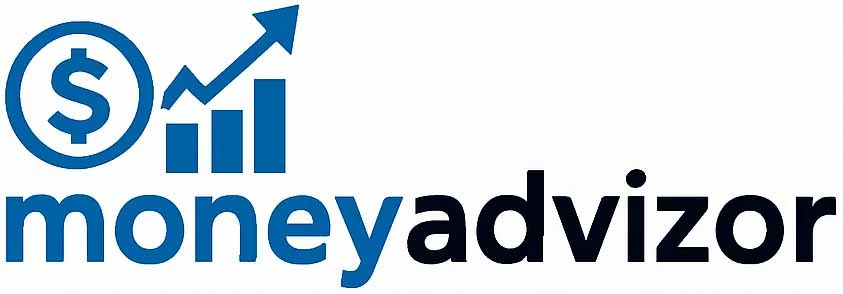Targeting direct exposure to India’s power sector? The newly launched Groww BSE Power ETF FOF – Direct Growth Plan offers a unique route. This open-ended Fund of Funds (FoF) aims to capture the growth potential of India’s power industry by investing primarily in the Groww BSE Power ETF. With its New Fund Offer (NFO) opening soon, understanding its structure, costs, and suitability is crucial before investing. Let’s break down everything you need to know.
What is the Groww BSE Power ETF FOF – Direct Growth?
- Type: Fund of Funds (FoF) – Domestic. It doesn’t buy stocks directly. Instead, it invests at least 95% of its assets in units of the Groww BSE Power ETF.
- Scheme: Open-ended. You can buy or sell units on any business day after the NFO period.
- Plan: Direct Plan. This means you invest directly with the fund house (Groww Mutual Fund) or through stock exchanges, bypassing distributors. This is key for cost savings.
- Option: Growth Option. All returns are compounded within the scheme (via NAV appreciation). No dividends (IDCW) are paid out; you realize gains only upon redemption.
- Underlying Focus: The Groww BSE Power ETF, which passively tracks the BSE Power Total Return Index (TRI). This index comprises companies involved in power generation, transmission, distribution, heavy electrical equipment, and integrated utilities.
NFO Details: Your Window to Invest at ₹10/Unit
- NFO Opens: July 18, 2025
- NFO Closes: August 1, 2025
- NFO/NAV Price: ₹10 per unit
- Scheme Reopens: On or before August 18, 2025 (for ongoing purchases/redemptions at NAV-based prices).
- Minimum Investment during NFO: ₹500 (and in multiples of Re. 1 thereafter).
- Goal: The fund seeks to raise a minimum corpus of ₹10 Crores. If not achieved, the NFO will be cancelled, and money refunded.
Understanding the Costs: Keeping More of Your Returns (Direct Plan Advantage)
One of the biggest draws of the Direct Growth Plan is its lower cost structure compared to the Regular Plan:
- Expense Ratio (TER): The maximum Total Expense Ratio (TER) permissible is 1.00% per annum of the scheme’s daily net assets. However, this is the overall cap.
- Direct Plan Benefit: Crucially, the Direct Plan excludes distribution commissions and expenses. While the exact TER for the Direct Plan isn’t fixed in the SID (it depends on actual AUM and expenses), it will always be lower than the Regular Plan TER charged under the same heads. Historical TERs for similar passive FoFs often range significantly lower than 1% for Direct plans.
- TER Components: Includes Investment Management fees (capped at 1% under the TER), Registrar & Transfer Agent fees, custodial fees, marketing expenses (lower in Direct), audit fees, GST on expenses (excluding GST on investment management fees), and other operational costs.
- FoF Cost Layer: Remember, you also bear the expense ratio of the underlying Groww BSE Power ETF. The TER of the FoF is in addition to the ETF’s costs. The SID states that the FoF’s TER over the underlying ETF’s weighted average TER shall not exceed twice that average, subject to the overall 1% cap.
- Exit Load: NIL. You can redeem your units at any time after the NFO without paying any exit load. This offers flexibility.
- Stamp Duty: 0.005% is levied on the net investment amount (amount invested minus any transaction charges) for every purchase transaction (including SIP instalments). This is deducted before units are allotted and is a statutory cost.
- Transaction Charges: For investments ≥ ₹10,000 made through a distributor, a transaction charge (₹150 for first-time MF investors, ₹100 for others) is deducted. This charge does NOT apply to Direct Plan investments since you are investing directly.
- Returns are taxed at 20%, if you redeem before one year. After 1 year, you are required to pay LTCG tax of 12.5% on returns of Rs 1.25 lakh+ in a financial year.
Minimum Investment Amounts: Getting Started
- Initial Purchase (Lump Sum – During NFO & Ongoing): ₹500 (and in multiples of Re. 1 thereafter).
- Additional Purchase: ₹500 (and in multiples of Re. 1 thereafter).
- Systematic Investment Plan (SIP):
- Daily SIP: ₹100 (min. 180 instalments)
- Weekly SIP: ₹100 (min. 24 instalments)
- Monthly SIP: ₹500 (min. 12 instalments)
- Quarterly SIP: ₹500 (min. 4 instalments)
- Minimum Redemption: ₹500 (or value equivalent) or any number of units.
Who Manages the Fund? The Investment Team
The fund is managed by a team specializing in passive strategies at Groww Asset Management Limited:
- Mr. Nikhil Satam (Dealer & Fund Manager – Equity): Over 8 years experience. Handles dealing for Groww AMC’s equity schemes (active and passive) and is a backup fund manager for passive schemes. Previously with Groww Invest Tech, Motilal Oswal, Kotak Securities.
- Mr. Aakash Chauhan: Over 6 years experience. Previously with Trust Mutual Fund, Mirae Asset Capital Markets, BP Wealth.
- Mr. Shashi Kumar: Over 17 years experience, primarily in insurance (Bharti Axa Life, Canara HSBC Life).
The team manages several other passive index funds and ETFs for Groww Mutual Fund.
Fund House: Groww Mutual Fund
- Asset Management Company (AMC): Groww Asset Management Limited
- Sponsor: Groww Invest Tech Private Limited (formerly Nextbillion Technology Pvt. Ltd.)
- Trustee: Groww Trustee Limited
- Registrar & Transfer Agent (RTA): KFin Technologies Ltd.
- Corporate Office: Lower Parel, Mumbai.
- Philosophy: Known for its digital-first approach and focus on making investing accessible, particularly through passive products.
Investment Objective: What Does the Fund Aim For?
The primary objective of the Groww BSE Power ETF FOF is:
“To generate long-term capital growth by investing in units of Groww BSE Power ETF.”
In simpler terms: It aims to provide returns that closely track the performance of the BSE Power Index (TRI) before expenses, by investing almost entirely in the ETF that mirrors that index. However, the SID clearly states: “there can be no assurance or guarantee that the investment objective of the scheme will be achieved.”
Fund Benchmark: Measuring Performance
- Benchmark: BSE Power Index – Total Return Index (TRI)
- Why this Benchmark? The underlying ETF invests in securities constituting this index. The TRI version includes dividends, providing a more accurate picture of total returns than a price return index.
- Tracking Error: The fund aims to keep the annualized tracking error (deviation from the benchmark) within 2%. Factors like expenses, cash holdings, and execution can cause deviation.
Underlying Index: BSE Power Index – The Core Exposure
The Groww BSE Power ETF (and thus this FoF) tracks the BSE Power Index. Key details:
- Composition: Stocks from Heavy Electrical Equipment, Power Generation, Integrated Power & Utilities, and Power Transmission sectors.
- Selection: Based on average float-adjusted market capitalization rank, aiming for 90% sector coverage.
- Liquidity Filter: Requires 90% trading frequency in the past 6 months.
- Weighting: Primarily float-adjusted market cap weighted (except BSE BANKEX and BSE OIL & GAS).
- Diversification Rules (as per SEBI):
- Min. 10 stocks.
- Max. 35% weight for any single stock (sectoral/thematic index rule applies).
- Top 3 stocks max. cumulative weight: 65%.
- Min. trading frequency (80%) and max. impact cost (1%) for constituents.
- Top Holdings (Illustrative as of June 30, 2025): NTPC, Power Grid, Suzlon Energy, Tata Power, Adani Power, CG Power, BHEL, ABB India, Adani Green Energy, Siemens.
What Should Investors Know Before Investing? Key Considerations
- High Risk: SEBI Riskometer rates both this FoF and its benchmark as “Very High” risk. Equity sectoral/thematic funds carry concentrated risk.
- Double Layer of Costs: You pay the TER of both the FoF and the underlying ETF. While the Direct Plan reduces the FoF layer cost, the combined cost is still a drag on returns compared to investing directly in the ETF. Evaluate if the FoF structure (potentially easier SIPs, fractional units) justifies this cost over direct ETF investment.
- Passive Strategy: Performance depends entirely on the BSE Power Index. The fund managers won’t try to pick winners or time the market within the sector.
- Sector Concentration Risk: Performance hinges on the Indian power sector. Regulatory changes, fuel price fluctuations, project delays, or broader economic slowdowns impacting power demand can significantly affect returns.
- Liquidity of Underlying ETF: The FoF’s ability to create/redeem units efficiently depends partly on the liquidity of the underlying ETF units in the market.
- Tracking Error: Despite the target, tracking error is inevitable. Understand what factors contribute to it (expenses, cash drag).
- New Fund: No performance track record exists. You are investing based on the strategy and index potential.
- Direct Plan Advantage: The Direct Growth Plan is essential for cost efficiency. Ensure you select “Direct Plan” clearly on your application form or platform to avoid being defaulted into the higher-cost Regular Plan.
Who Might Consider This Fund (Direct Growth Plan)?
- Investors with a very high-risk appetite seeking long-term capital appreciation (5-7 years+ horizon).
- Those with a strong bullish conviction on the growth prospects of the Indian power sector (generation, transmission, equipment, renewables).
- Investors wanting passive, index-based exposure to this specific sector without stock-picking.
- Those preferring the convenience of mutual fund features (like SIP starting at ₹100, fractional units) over directly buying ETFs on the stock exchange.
- Cost-conscious investors committed to using the Direct Plan to minimize expenses.
Scheme Information Document(SID)
Download Scheme Document: link
For More Related to fund: Visit here
Fund House Contact Details
📍 Address:
505 – 5th Floor, Tower 2B, One World Centre, Near Prabhadevi Railway Station,
Lower Parel, Maharashtra, Mumbai – 400013
📞 Phone: 8050180222
📅 Launch Date: 10 Apr 2008
✉️ E-mail: support@growwmf.in
🌐 Website: growwmf.in
Conclusion
The Groww BSE Power ETF FOF Direct Growth Plan offers a specialized, passive route to invest in India’s power sector through a single mutual fund. Its NFO presents an entry point at ₹10 per unit. The key advantages are sector focus, passive management, and the cost savings of the Direct Growth Plan. However, the “Very High” risk rating, sector concentration, double cost layer (FoF + ETF), and lack of track record demand careful consideration.
Before investing, ask yourself:
- Does my risk profile align with a “Very High” risk sectoral fund?
- Am I convinced about the long-term growth story of the Indian power sector?
- Do I understand and accept the costs involved (including the underlying ETF’s TER)?
- Does the convenience of the FoF structure outweigh the potential cost advantage of buying the ETF directly?
If the answers align and you are comfortable with the risks, the Direct Growth Plan of this FoF could be a tactical satellite holding within a well-diversified portfolio. Always consult with a SEBI-registered financial advisor if unsure about suitability.




